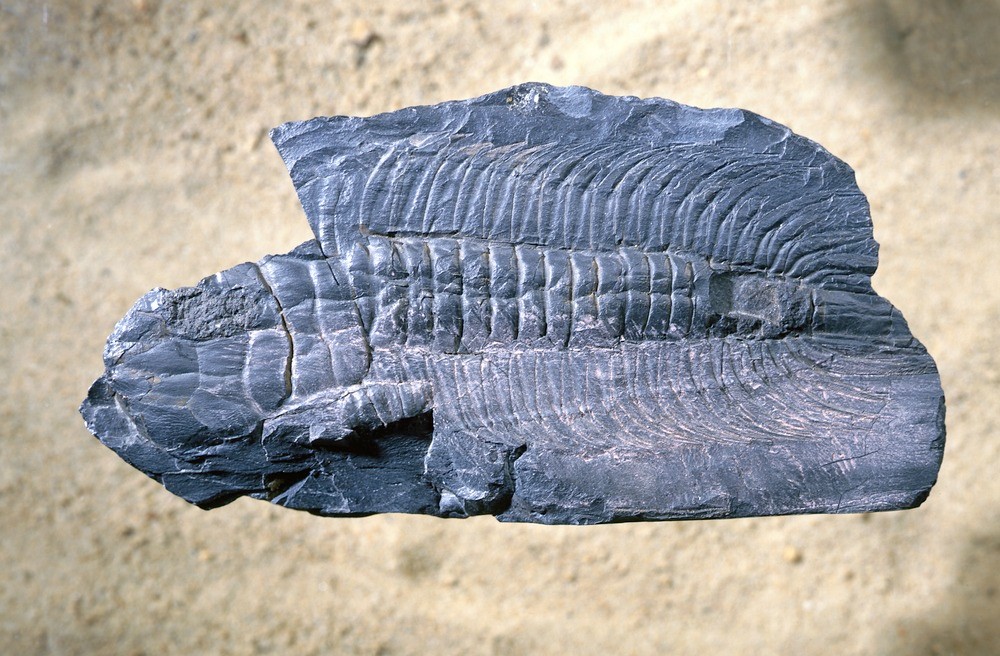| P number: | P550301 |
|---|---|
| Caption: | Paradoxides, a trilobite from the deeps. |
| Description: | Paradoxides is one of the giants of the trilobite world, some specimens being up to about half a metre long (the broken specimen illustrated is about 18 cm. long). This genus lived during mid-Cambrian time (about 505 to 518 million years ago) in North and South America, Europe, North Africa and Turkey, where it is found in deep water shales. This large trilobite has more than 15 segments comprising its thorax (body). Its head is large, with long spines swept backwards and a pear-shaped glabella (mid lobe of the head) that inflates toward the front and is divided by several furrows. The pygidium (tail) is small and sometimes bears spines. Trilobites were arthropods, distant relatives of crustaceans and insect that live today. They lived in the seas of the early Cambrian and they became extinct with the mass extinction at the end of the Permian times. Trilobites are divided into three parts, the cephalon (the head, which is divided into the central glabella with two cheeks each side); the thorax (body, also divided into three and comprising a number of segments); and the pygidium (the tail, also divided into three). These animals often had well developed eyes, with many lenses made of calcite crystals, although others were blind. Some trilobites swam, most scurried about on the sea floor and yet others burrowed in to the sand on the sea floor |
| Photographer: | Unknown |
| Copyright statement: | Unknown |
| Orientation: | Landscape |
| Size: | 471.30 KB; 1000 x 656 pixels; 85 x 56 mm (print at 300 DPI); 265 x 174 mm (screen at 96 DPI); |
| Average Rating: | Not yet rated |
| Categories: | Best of BGS Images/ Fossils |
Reviews
There is currently no feedback

